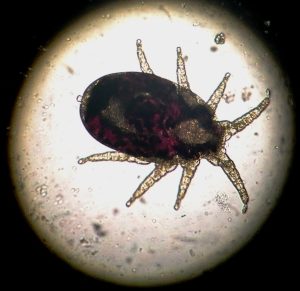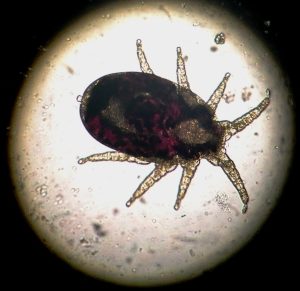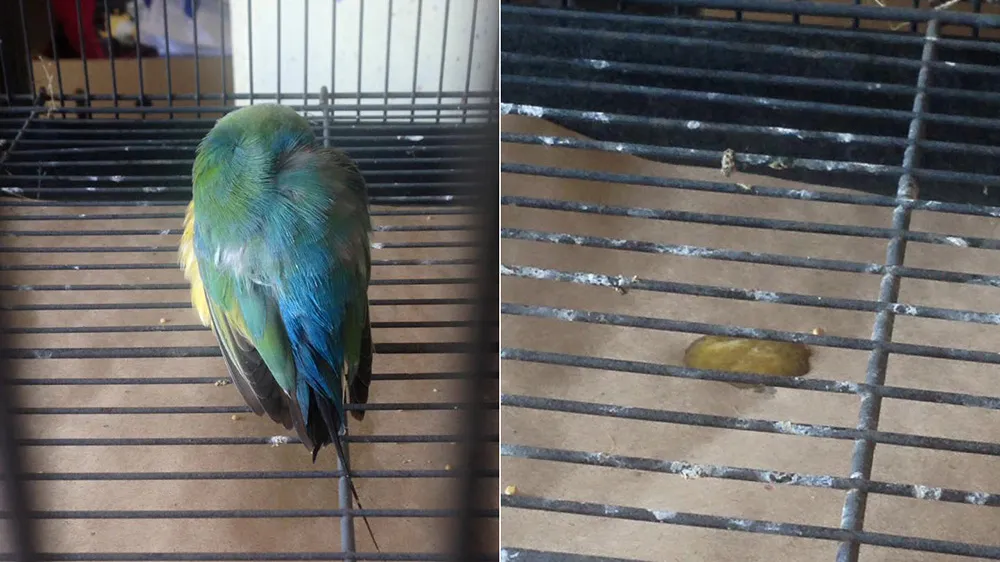
Air Sac Mites in Finches: Understanding, Preventing, and Treating
By longnkp / Jul 29 2024 / Health
Birds wheezing, sneezing, coughing, opening their mouths while breathing, tail bobbing, and runny noses are signs of Air sac mite disease.
Air sac mite is a very common disease and the leading cause of bird deaths among novice Gouldian finch owners. Understanding the causes of the disease, how to prevent it, and how to use specialized medications is essential for those who are caring for or planning to learn about this bird species. Although Air sac mite is very dangerous, it is very easy to treat and control if you are well-versed in the basic knowledge mentioned below.
What is Air sac mite?
Air sac mites (Sternostoma tracheacolum) are microscopic parasites that infest the respiratory systems of birds, including finches. They inhabit the air sacs, trachea, and lungs, causing respiratory distress and other serious health problems. These mites are particularly dangerous for finches, as their small size makes them more vulnerable to respiratory issues.

Air sac Mite
Which species are most susceptible to Air sac mite infection?
Extensive studies have been conducted on Air sac mite disease in finches. The results show that Air sac mite has been found in Gouldian finches and other species that live closely together, including: Owl finch, Zebra finch, Longtail finch, Pictorella Manikins Finch, and Mask Grass Finch. Among them, Gouldian finches and Pictorella Manikins Finch are the most severely affected by this parasite.
Gouldian finch with Air sac mite
Air sac mite is a contagious disease
- Air sac mites can be transmitted directly through the air from the nasal cavity of infected birds to healthy ones when the infected birds cough and sneeze.
- From parent birds to chicks during feeding.
- Through drinking water and food when infected birds are housed with healthy ones.
The life cycle of Air sac mite
Air sac mites live parasitically in a bird's respiratory system (trachea, air sacs, bronchi, and lungs). Females lay eggs in the lungs, and the eggs hatch into larvae. The newly hatched females move to the air sacs or nasal cavities and trachea to live there until they mature. When they reach reproductive age, they return to the lungs where the males are waiting to lay eggs. This cycle occurs within 6 days.
Air sac mite attacks the bird's respiratory system
In the bird's respiratory system, there are lungs and 9 air sacs. These 9 air sacs ensure the bird's high metabolic rate. These air sacs have very thin walls and few blood vessels. The respiratory system helps maintain the bird's body temperature; when infected with parasites, the bird will quickly lose heat and get cold. Infected birds usually fluff up their feathers to keep warm. Maintaining a high and stable body temperature consumes a lot of energy. If not detected in time, the bird will quickly become exhausted and die. Birds must be isolated in a separate cage with a heating system supported by infrared or incandescent bulbs during treatment. To ensure safety, use a thermometer to control the temperature in the heated cage, avoiding too high temperatures that could endanger the bird.
How does Air sac mite damage the body of an infected bird?
Once they invade the bird's respiratory system, air-sac mites cause damage and bleeding, leading to pneumonia and ultimately death if not treated. They use their legs to attach to connective tissues. The bird's immune system will secrete mucus to cover and combat them. The number of parasites combined with this mucus reduces the amount of air entering the trachea, affecting the bird's breathing ability. As the number of parasites increases, the trachea narrows, and the bird will start to breathe through its beak to increase the amount of air entering the lungs. At this point, the signs of the disease will be easily noticeable when we observe the bird's external behavior.
Why can birds relapse even after recovering from the disease?
Once a bird is infected with Air sac mite, it is almost impossible to completely eliminate the disease. Not all larvae mature immediately after hatching. They will remain dormant in the bird's respiratory system for a long time. Because the 9 air sacs have very thin walls and few blood vessels, SCATT and S76 medications that penetrate through the blood vessels are ineffective against these dormant larvae. They will wake up, mature, and quickly spread throughout the flock when favorable conditions such as illness, stress, or hot and humid weather occur. Regular preventative treatments with SCATT and S76 should be maintained consistently to keep the number of pathogens below an acceptable level. A large number of adult Air-sac mites killed simultaneously can block the respiratory tract and cause the bird to suffocate to death.
Not all birds are easily infected
For Gouldian finches, the infection rate in wild birds is measured at 63%. When young birds are provided with the necessary nutrition from birth, it allows them to develop a strong immune system. When a few Air-sac mites invade the respiratory system, the bird's immune system will repel them and keep the pathogen count low, ensuring safety and not affecting the bird's health.
Medications for treating and preventing Air-sac mite
There are 2 popular medications for treating and preventing Air sac mite in birds.
+ S76 Medication
S76 is suitable for treating large flocks or birds in large aviaries by mixing it into their drinking water. The medication is safe, does not harm the health and reproductive ability of adult birds, young birds, or eggs, and can be used during the breeding season.
+ SCATT Medication
The active ingredient is Moxidectin. The medication kills Air sac mites by interfering with the parasite's nerve impulse transmission system, causing paralysis and death. Birds and mammals do not have the same nerve impulse transmission system as parasites, so the medication does not harm them. SCATT will penetrate the bird's blood vessels and have a continuous effect for 3 weeks. The manufacturer recommends re-treatment and prevention 3-4 times a year. Use the medication immediately after each breeding season and molting.
Note: Treatment with S76 and SCATT is not always 100% successful. Severely affected birds may die 2 to 7 days after treatment due to the blockage of the respiratory tract caused by a large number of dead parasites.
Conclusion
The above are the knowledge about Air sac mite disease as well as the prevention and treatment methods. Bird owners should use specialized medications for regular preventative treatments to avoid unnecessary losses. Additionally, maintaining and providing a nutritious diet is very important in helping birds stay in good condition, enhancing the immune system in parent birds and future generations to combat the lurking threats and dormant pathogens called Air sac mite!
Relative Posts
Recent Posts
- Unlocking the Secrets of Calcium for Healthy Captive Birds
- Hand Feeding Finches
- Why Parents Toss Chicks and How to Help
- Fostering Finches: Ensuring the Survival of Your Feathered Friends
- Sunshine and Finches: A Guide for Indoor Bird Keepers
- Air Sac Mites in Finches: Understanding, Preventing, and Treating
- Introducing New Foods to Your Finch
- Homemade Finch Food Recipes
- Choosing Breeding Gouldian Finch Pairs
- How to Choose a Nest Box for Your Finches


